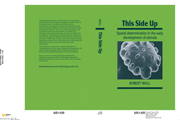Book contents
- Frontmatter
- Contents
- Preface
- Acknowledgements
- 1 Oogenesis
- 2 From oocyte to zygote
- 3 Does cleavage cut up a preformed spatial pattern?: the case of spiralian embryos
- 4 The limits of mosaicism in non-spiralian cleavage
- 5 Cellular interactions in the morula and blastula: the case of sea urchin embryos
- 6 Interactions at morula and blastula in other embryos
- 7 Interactions between moving cells: the case of amphibian gastrula
- 8 Spatial determination in the gastrulae of other groups
- 9 Determination in embryos showing partial cleavage
- 10 Patterns and mechanisms in early spatial determination
- References
- Index
- Frontmatter
- Contents
- Preface
- Acknowledgements
- 1 Oogenesis
- 2 From oocyte to zygote
- 3 Does cleavage cut up a preformed spatial pattern?: the case of spiralian embryos
- 4 The limits of mosaicism in non-spiralian cleavage
- 5 Cellular interactions in the morula and blastula: the case of sea urchin embryos
- 6 Interactions at morula and blastula in other embryos
- 7 Interactions between moving cells: the case of amphibian gastrula
- 8 Spatial determination in the gastrulae of other groups
- 9 Determination in embryos showing partial cleavage
- 10 Patterns and mechanisms in early spatial determination
- References
- Index
Summary
My work for this book really began 20 years ago when I worked for the late Professor C.H. Waddington producing summaries of current research on development. I became particularly interested in the origins of spatial patterns, where I felt that I could detect signs of common features in many different developing systems. Since that time I have tried to make notes on all published studies of early development as they appeared, whatever the animal group concerned. I have also gone back in time to look again at many seminal studies published up to 100 years ago.
In selecting from this huge literature, I have been guided mainly by the principle that the work should have a potential relevance for the spatial determination problem. No doubt I have failed to ‘pick the winners’ in some cases, but the alternative was to risk losing the thread in a book of unwieldy size. My choices will seem to many to be particularly idiosyncratic in the physiological and biochemical sections, where I have presented some classical data (the meaning of which is still unclear) while omitting some modern studies. I justify this on the basis that the former will one day have to be encompassed in theories of spatial determination, while the latter may prove not to be relevant and have in any case been considered in depth in Davidson's Gene Activity in Early Development.
- Type
- Chapter
- Information
- This Side UpSpatial Determination in the Early Development of Animals, pp. ix - xPublisher: Cambridge University PressPrint publication year: 1990



